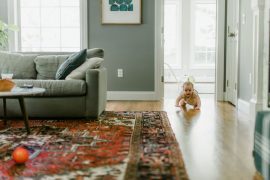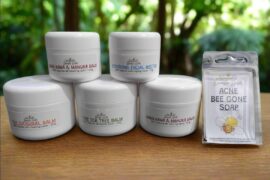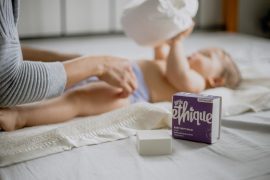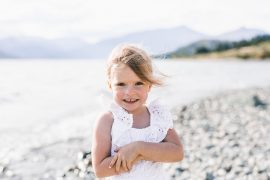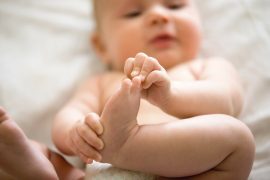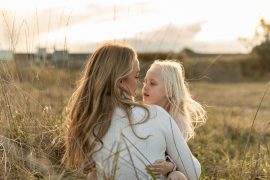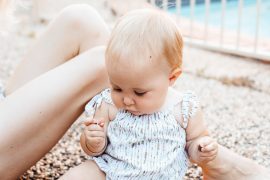By Thinkwise. Read Part 1 HERE.
We have been talking about 10 ways you can reduce your family’s chemical load. In this article we will cover these tips:
- Breathe clean air
- Minimise skincare and use safest options
- Always wash new clothes and choose natural fibers
Breathe Clean Air
OK, so we know we can’t wrap ourselves in a bubble and never let the world in, but studies have shown that the air in our homes can actually be quite toxic. If you have an HRV system in your home make sure you have the highest quality filters installed. If you have or are choosing a heat pump check if it has air purification functions. Alternatively, consider an air purifier for bedrooms. If these options aren’t economical, then regular dusting, sweeping/vacuuming, and opening up the windows will make a difference, outside air has been proven in multiple studies to be purer than inside air 4.
Try to avoid air-fresheners, perfumes and scented personal care products that contain phthalates. Unfortunately, manufacturers are not required to list all the ingredients used to make their fragrances as they are protected as “trade secrets” so it can be difficult to identify. If the manufacturer can’t/won’t tell you what is in their “fragrance” or “parfum” then it’s not worth the risk. The only safe fragrances are high-quality essential oils and even these should be used in moderation and not used around your baby unless recommended by a qualified consultant.
Phthalates are known endocrine disruptors that mimic oestrogen and have been linked to early puberty, undescended testes in baby boys, cancer, birth defects and other developmental issues.
Another reason to avoid air fresheners is a chemical called paradichlorobenzene which is a common active ingredient that is an eye, skin and throat irritant and causes kidney and liver tumours in mice.
Plants can also help to detoxify your air. They can process the benzene, formaldehyde and trichloroethylene in our indoor environments (common substances in household furniture/building material off-gassing). Try English ivy, snake plants, spider plants, peace lily, golden pathos, weeping fig, bamboo, and philodendrons. Or if you would like some colour, chrysanthemums and gerbera daisies do the job quite nicely.
It is best to avoid painting and redecorating your child’s room if you are pregnant. If you are renovating or redecorating choose NO or low VOC paints and products. Make sure you try to “gas off” painted and renovated areas by opening windows and removing all dust and debris before anyone lives in these areas. The smells can cause nausea and headaches for a reason, the chemicals in paints, adhesives, and building products are not good for us.
Minimise skincare and use safest options
What you put on your skin goes in. The medical world have understood this for some time and it is considered an effective method for administering medication (i.e. via patches). But it has taken some time for this to translate to the dangers associated with the increased use of personal care products. They are full of chemicals, of which over 80% have never been tested for safety. Chemical build-up in tumors and blood are now beginning to help us understand the chemicals that have been absorbed, and their danger to our health.
By the time you leave the house in the morning most women have used 10-12 personal care products. Body wash, shampoo, conditioner, toothpaste, moisturiser, deodorant, foundation, bronzer, mascara, eye liner, eye shadow, lip stick/gloss and perfume are the most common. From these products alone you are being exposed to up to 200 chemicals – many of which can be dangerous to your health. The average number of products used per day by men is 6-8.
See next page for the rest of the article…


